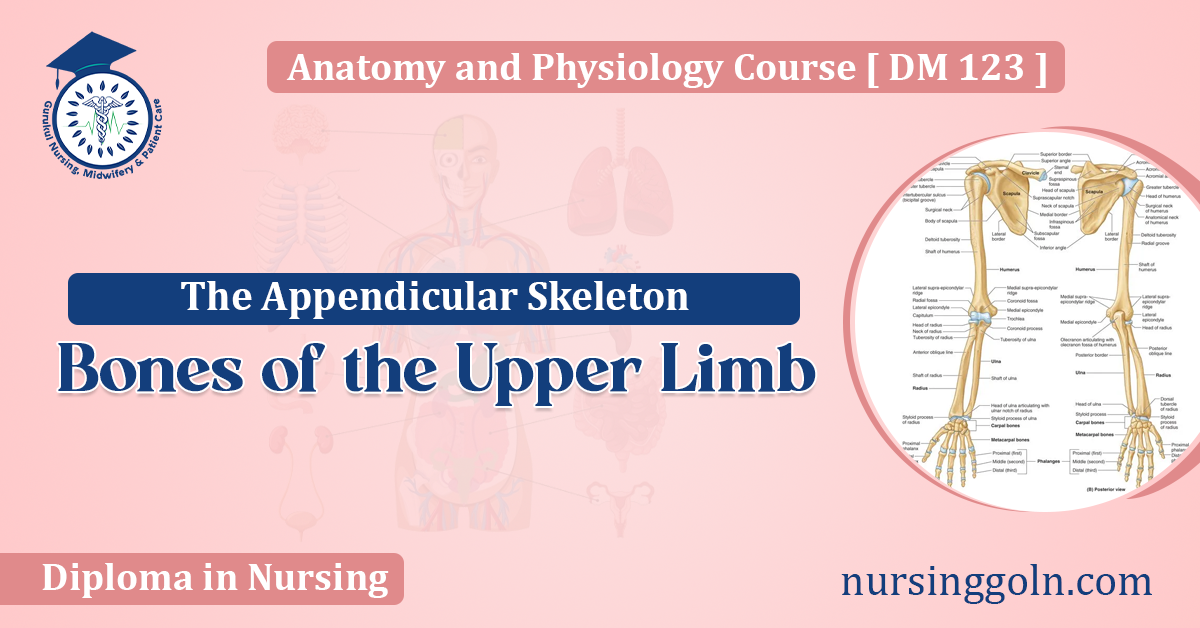The human skeleton is a marvel of evolution, designed for both mobility and protection. The upper limb is a testament to this, allowing us to engage in activities ranging from delicate tasks such as writing or playing musical instruments to vigorous actions like lifting weights or climbing mountains. The appendicular skeleton, of which the upper limb bones are a part, is responsible for our locomotion and ability to interact with our environment. Let’s delve into the intricacies of the bones of the upper limb and appreciate their structure and function.
1. Introduction to the Appendicular Skeleton
The human skeleton is divided into two main components: the axial skeleton and the appendicular skeleton. The axial skeleton includes the skull, vertebral column, and rib cage. On the other hand, the appendicular skeleton comprises the bones of the limbs and the pectoral and pelvic girdles. In total, the upper limbs consist of 64 bones, 32 for each limb.
2. Components of the Upper Limb
The bones of the upper limb can be categorized into three major segments:
- The Shoulder or Pectoral Girdle
- The Arm or Brachium
- The Forearm or Antebrachium
- The Hand or Manus
2.1. The Shoulder (Pectoral Girdle)
The pectoral girdle acts as the attachment point of the upper limb to the axial skeleton. It is composed of two bones:
- Clavicle (Collarbone): This is a long bone that serves as a strut between the shoulder blade and the sternum or breastbone. It has a slight S-shape and provides support for shoulder actions. A broken clavicle, which can result from a fall onto an outstretched arm, is a common injury.
- Scapula (Shoulder Blade): This is a flat, triangular bone situated at the back of the shoulder. It has several significant landmarks, such as the acromion (which connects with the clavicle), the spine, and the glenoid cavity (where the arm bone articulates).
2.2. The Arm (Brachium)
The arm is represented by a single bone:
- Humerus: The humerus is the long bone of the upper arm, extending from the scapula to the elbow. It articulates with the scapula at the glenoid cavity to form the shoulder joint. Its distal end, near the elbow, has two main processes — the capitulum and the trochlea — which articulate with the forearm bones.
2.3. The Forearm (Antebrachium)
The forearm comprises two parallel bones:
- Radius: Located on the lateral (thumb) side of the forearm, the radius allows for the hand’s rotation. Its prominent head articulates with the capitulum of the humerus, while its distal end articulates with wrist bones.
- Ulna: This is the medial bone of the forearm, characterized by its hook-like process known as the olecranon, which forms the bony prominence of the elbow. It articulates with the trochlea of the humerus.
2.4. The Hand (Manus)
The hand can be divided further into three segments:
- Carpus (Wrist): Consisting of eight carpal bones arranged in two rows. These bones play a crucial role in wrist flexibility and strength.
- Metacarpus (Palm): The palm has five metacarpal bones, each corresponding to one of the digits (thumb to little finger).
- Phalanges (Digits): There are 14 phalanges in total, representing the fingers and thumb. Each finger has three phalanges (proximal, middle, and distal), except the thumb, which has only two (proximal and distal).
3. Joints and Mobility
The upper limb bones are not just rigid structures; they articulate at various joints allowing for a wide range of movements. For instance:
- Shoulder Joint: Formed by the articulation of the humerus with the scapula. Being a ball-and-socket joint, it offers a broad range of motion.
- Elbow Joint: Formed by the interaction of the humerus, radius, and ulna. It’s primarily a hinge joint, allowing for flexion and extension.
- Wrist Joint: Between the radius and the carpal bones, this joint facilitates the hand’s flexion, extension, adduction, abduction, and slight rotation.
4. Significance and Functions
The bones of the upper limb are essential for various reasons:
- Protection: They protect vital organs like the heart and lungs.
- Support: They provide structural support, enabling us to lift and carry objects.
- Mobility: The joints ensure a wide range of motion.
- Hemopoiesis: Bones like the humerus are sites for blood cell production.
- Mineral Storage: They store essential minerals like calcium and phosphate.
5. Conclusion
The bones of the upper limb, intricate in their design and diverse in their function, are a testament to the marvels of human anatomy. They not only provide structure and support but also enable the versatility of movements that define our interaction with the environment. From the broad strokes of the pectoral girdle to the delicate architecture of the phalanges, the upper limb remains an area of intrigue and admiration for students and professionals of anatomy alike.
